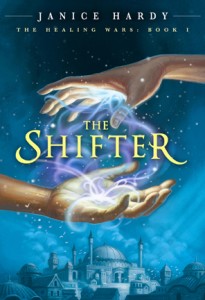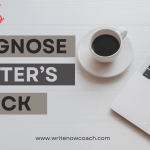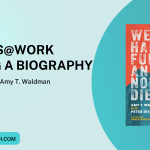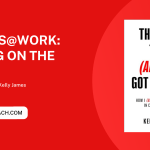Look! It’s an Idea: Moving from Premise to Plot
Today, I am delighted to welcome Janice Hardy to The Write Now! Coach Blogs. Janice is the author of three books of fantasy. Today she is here to teach us how to move from a great idea to a workable plot. Enjoy!
Look! It’s an Idea: Going From Premise to Plot by Janice Hardy
I didn’t know it at the time, but the first real novel I ever wrote was a premise novel. I had a cool idea and the entire book was about illustrating that cool idea. Because of that, I had no solid protagonist, no narrative drive, no personal stakes, and no chance at selling that book.
Because premise novels are not stories.
I don’t think my experience is uncommon. I read a lot of queries that describe an idea, but there’s no sense of a protagonist doing anything to solve a personal problem. (Heck, I’ve written a lot of those kinds of queries). Often, these novels are a lost cause because they’re too inherently flawed to fix. But sometimes, it’s just a matter of finding the story within your premise.
What is a premise novel? A premise novel is one where the idea is what’s driving the story, not a character with a problem. It often has multiple POVs (and a lot of them) because you’re trying to show all the various aspects of this idea. The stakes feel high, usually a “save the world” type, but when you look at the characters, none of them really have anything to lose except maybe die. But everyone has that same stake, so it doesn’t feel important. Plus, the stakes never escalate. They start out life and death and stay life and death the entire time. Since odds are you’re not going to kill off everyone, those “high stakes” aren’t high at all. The reader knows it won’t happen.
Think of it like a blow out sporting event. One team dominates the other, and even though there are people scoring left and right, and all this excitement on the field, fans know how it’s going to turn out and they’re leaving before the end of the game so they don’t get stuck in traffic. They stay until they get bored, or it’s not worth their time and then go home. You don’t want that for your book. You want readers to salivate over knowing how it all turns out.
How can you tell if you have a premise novel? If you can’t describe what your novel is about in one sentence (even a bad sentence) using the standard “protagonist has X problem and he needs to do Y to win Z or A happens” then you might have a premise novel. Or if you describe your novel by talking about the idea behind it, and not any one or two characters who are driving it. Or you describe it by the theme alone. (literary novels are okay here, that’s normal for them)
How do you fix it?
First, find yourself a core conflict. You probably already have a good idea, since the idea is what excited you in the first place. Look for something tangible that has to be done to prevent/trigger/avoid/whatever this idea is about. What thing is going wrong in this story?
Next, pick a protagonist. Someone in your story is in a position to solve this problem. Better still, they’re personally involved so that solving it matters to them. Something bad will happen if they don’t solve it. Lots of smaller bad things will happen to them along the way to solving it. If they act, they can solve if, but if they don’t act, it will happen. (or not happen if that’s the case)
Now, pick an antagonist. Who is standing in the way of your protagonist solving this problem? Someone that has something to gain by making this happen? Or someone who has their own agenda about this problem that is at odds with the protagonist’s goal?
The story will unfold as the protagonist tries to solve the problem and the antagonist keeps getting in the way. Two personal forces clashing against each other. Both will have things to lose if they lose. Both will have things to win if they win. If you took both out of the story, the story would fall apart.
That’s key. A premise novel is often one where you can take the hero out, and the story still happens, often with little or no change.
Now, look at your story and adjust your plot so the protagonist is trying to solve their problem.
Reasons You Might Resist This
1. I’ll have to cut so much. Probably. Premise novels usually have tons of extra stuff in them. But think of it as research. You did a lot of background to understand your story and now you’ll be able to pinpoint exactly the best stuff in it. Plus, any scenes you truly love can be salvaged with your protagonist or antagonist. Just rework them so they fit the story and not just the idea.
2. I’ll have to rewrite most of it. Maybe. But a lot can still be used, and with a solid protagonist and clear goals, the rewriting will go much easier.
3. I’ll have to get rid of half my characters. Yes, but that’s a good thing. Too many characters, especially POV characters, dilute the story and make it hard for the reader to connect to any one person. If they don’t connect, they don’t care, and if they don’t care, they don’t read.
I know, it’ll take a ton of work. It’ll require you to trash maybe the whole thing. You’ll have to get rid of characters, or POVs of subplots. It’ll be hard. But in the end, you’ll have a much better novel, and isn’t that the goal?
Ideas are the hard part of writing. They’re the things no one can teach you how to do. You either come up with stuff, or you don’t. I can tell you ways to trigger your creativity all day, but there’s no guarantee any of them will work for you, or that you’ll come up with anything good even if they do. So a premise novel kinda gets the hard stuff out of the way. You have the idea already, and probably a pretty darned fleshed out one at that. Now it’s just a matter of training yourself to think in terms of story and work on your plotting skills.
And that you can learn.
Your turn: Have you ever written a premise novel? Do your ideas start out as a premise, a character or a conflict? Which do you find easiest to work with?
 About the Author: Janice Hardy always wondered about the darker side of healing. For her fantasy trilogy THE HEALING WARS, she tapped into her own dark side to create a world where healing was dangerous, and those with the best intentions often made the worst choices. Her books include THE SHIFTER, BLUE FIRE, and DARKFALL. She lives in Georgia with her husband, three cats and one very nervous freshwater eel. You can visit her online at www.janicehardy.com, chat with her about writing on her blog, The Other Side of the Story (http://blog.janicehardy.com/), or find her on Twitter @Janice_Hardy.
About the Author: Janice Hardy always wondered about the darker side of healing. For her fantasy trilogy THE HEALING WARS, she tapped into her own dark side to create a world where healing was dangerous, and those with the best intentions often made the worst choices. Her books include THE SHIFTER, BLUE FIRE, and DARKFALL. She lives in Georgia with her husband, three cats and one very nervous freshwater eel. You can visit her online at www.janicehardy.com, chat with her about writing on her blog, The Other Side of the Story (http://blog.janicehardy.com/), or find her on Twitter @Janice_Hardy.
















My manuscript is a epic urban fantasy filled with blended-family allegory. However, the premise details the cause and reason for the coming 2012 Apocalypse on 12-21-2012. Its been a challenge to hold it together.
Originally with no antagonist or plot, after two years of tweaking the original idea, I essentially now have a different manuscript. Only two or three of my original characters have survived but it is still a multiple POV story. The hardest part for me is\was to keep the POV changes as simple as possible (or eliminate them) without disturbing the narrative flow. In additional to normal editing, polishing, etc., I have cut in the range of 60,000 words worth of chapters and scenes to make it better.
I always finds it amusing to see agent comments in query and submission guidelines that read something like this: ‘You must be willing to rewrite and change large parts of your book.’
My question is, “What first time novelist thinks they got it their story right the first time?”
Not me.
If you sincerely love writing and learning how to write better as much as I do, then the reworking is worth your time.
I hope others who choose to write enjoy the process as much as I do and are willing to continuously improve your skills and your work until you are ‘done’.
Wish me luck in finishing on time. 🙂
Al, congrats on all you have done to transform your story! Revision is always a part of the process–and it worries me when writers feel like the first draft is the final draft! I wish you luck in finishing on time!
Good luck, Al! Sounds like you’ve done a lot of work on that manuscript, and it’s been worth it. I think most first time novelists think they got the story right the first time (I know I did). We don’t yet know what we don’t know, and those starter novels are our training programs. Kudos to you for knowing it wasn’t done yet 🙂
Thanks so much for having me here today!
I’m glad to have you. What a wonderful post! Thank you!
I usually start with a character’s voice. I write a smattering here and there until I figure out who they are and what kind of world they live in- and then I still need to figure out the plot. It’s sort of like banging your head on a wall repeatedly for months at a time, waiting for the wall to give. Luckily I’m a very stubborn person. 🙂
I think starting with character is really good, I imagine that leads to character driven novels, which I love. Take care of that poor head of yours!
I hear lots of writers describe a similar process, so you’re not alone there. That first draft is to find the story, and then you can revise it 🙂 I do it similarly, but I find the plot first, then tweak the characters.
Yep. I wrote a premise novel complete with cool idea and vague save the world stakes. LOL!
I knew it wasn’t working but didn’t know how to fix it for long time. I put it aside for a short while and then felt it tugging at me to return. With fresh eyes, I added a tangible problem for my protag to work through. All of a sudden my characters were faced with hard decisions to make and conflict was popping up everywhere. Things started to get personal for my characters. Basically, the real story inside the premise began to emerge. Lots of cutting (and adding) are now in process, but I’m finding that the cutting isn’t as painful as I would have thought.
Great post Janice.
Wow–what a great story, CherylAnne. I love how once you gave the protagonist a problem, the conflict exploded! Love how that happens!
Grats! That’s great that you figured out how to fix it and move from premise to plot. Cutting really isn’t bad when you know it’ll make the story better 🙂 It’s like erasing the guide lines in a sketch and leaving just the pretty parts to show.